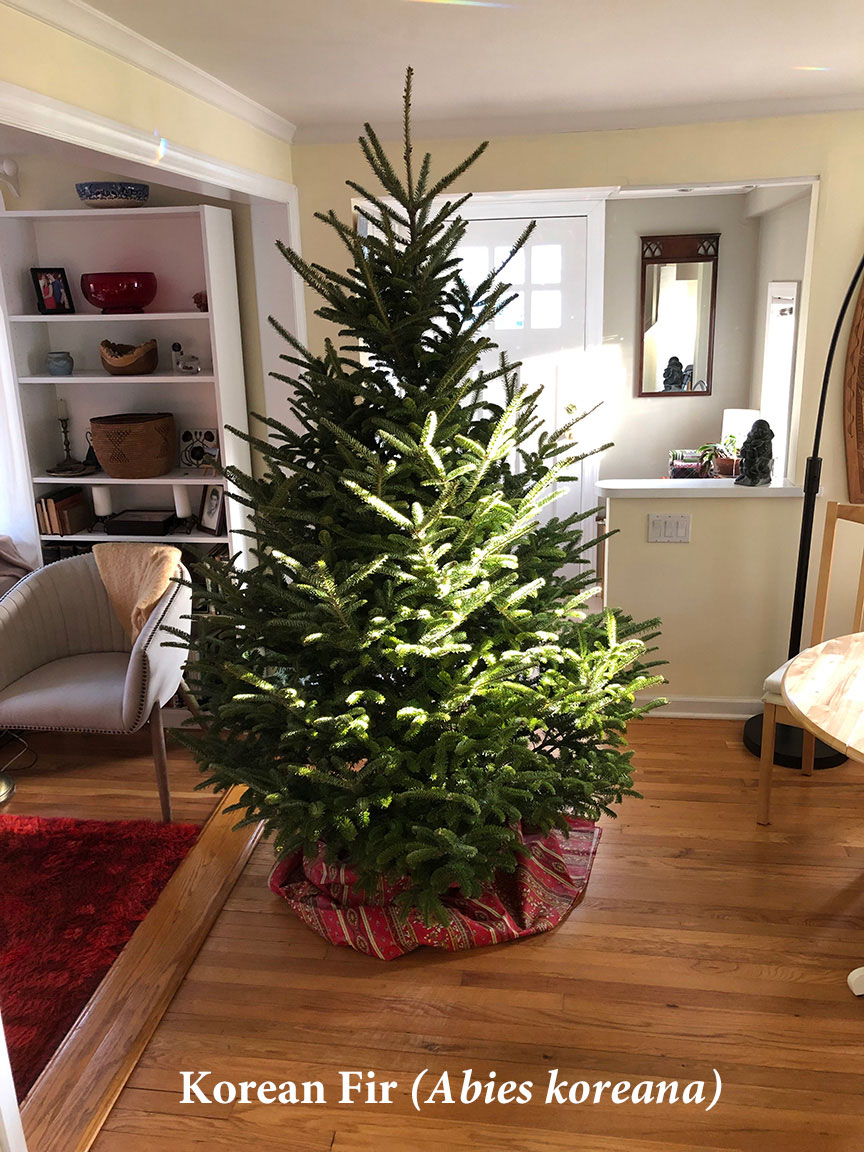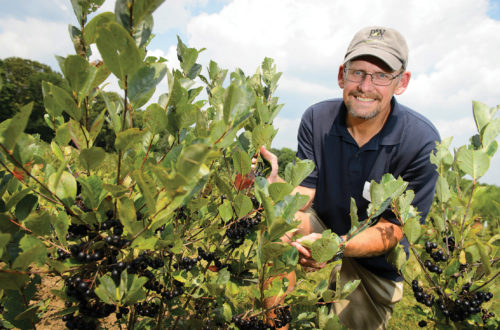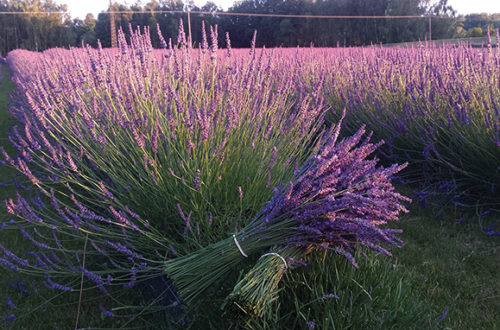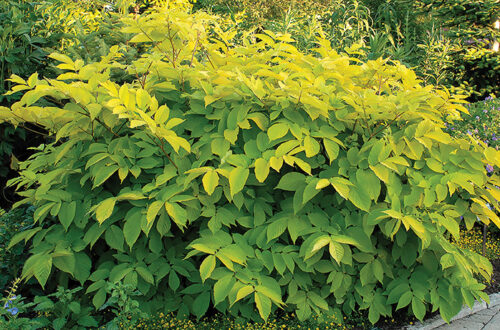By Richard S. Cowles
Six years ago, Dr. Richard (Dick) Jaynes wrote a splendid article “All About Christmas Trees,” for Connecticut Gardener (Vol. 21, No. 5, pp. 2-5). In that article, he described the basics on how Christmas trees are grown in our state. This article can be considered an update; in it, I will explain what changes are likely to take place in the species being grown and why these changes are necessary.
This information may also be useful for gardeners who wish to know which species of conifers are suitable for planting in their landscape, and provides guidance regarding the various diseases, insects, and mites affecting these species grown either as Christmas trees or in our landscapes.
The largest change experienced by gardeners and their plants is our climate. With a changing climate, we can expect there to be hotter, colder, drier, and wetter conditions – not all at the same time, of course!
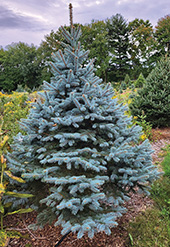
Colorado Blue Spruce
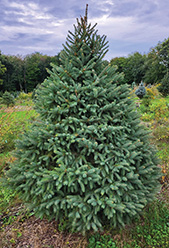
White Spruce
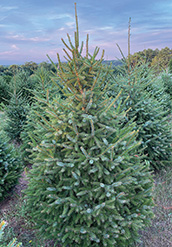
Serbean Spruce (Picea omerika)
One key to understanding the impacts of climate changes on plants is that average temperatures and rainfall may not change very dramatically, but it is the extremes that govern whether our plants can survive. The reasons for the “climate weirdness” of wild fluctuations in temperatures and rainfall are that temperatures have especially risen in polar areas, which decreases the difference between the temperate and the polar regions.
This, in turn, slows down the polar jet stream, which is a narrow ribbon of fast-moving air about 6 miles above sea level. It is a principal weather maker: north of the jet stream cold air masses are found, and tropical or subtropical air masses are found to its south. When the jet stream has high velocity, it has a straighter, fairly predictable path circling the globe. When it slows, the amplitude of the waves in its path become exaggerated, unpredictable, and sometimes stuck in place.
A slow-moving jet stream dips farther south than normal, while another part of the jet stream may loop close to the north pole. This behavior can simultaneously lead to record-setting heat above the arctic circle, and “polar vortex” cold events reaching unexpectedly far south.
Therefore, it can be a gamble to look at our warming winters and be tempted to install plants in our landscapes that are adapted to a warmer USDA climate zone – what we may really need are tougher plants that can withstand more extremes.
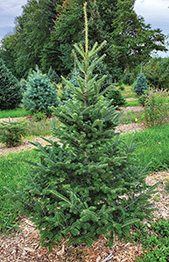
Fraser Fir (Abies fraseri)
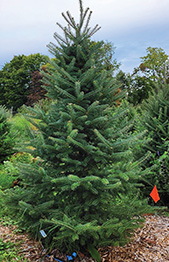
Canaan Fir (Abies balasmea var phanerolepis)
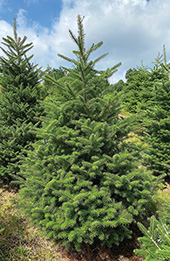
Korean Fir (Abies koreana)
Drought & Heat Stress
Since Dick’s article was published, we have seen tremendously challenging drought (2014-2017, and again in 2020), extreme rain (2018 and 2021), and heat leading to stressed trees (2021). For several years running, we have a drought in May, just at the time that we are trying to establish newly planted trees.
Trees respond to stress in several ways. For conifers, heat stress and drought cause the plants to close their stomates to conserve moisture. With unrelenting heat, having stomates closed means that the plant is unable to conduct photosynthesis and thus must use existing carbohydrate reserves. This can starve the plant, which can lead to weakened root systems and loss of older needles.
All conifers drop at least one year’s worth of needles every year, but when an additional 1-2 years of needles are lost, the trees’ foliage looks sparse and is visually unappealing. Trees can use their photosynthates in two ways, either to grow or to defend themselves. When trees are stressed they have less ability to defend themselves or to grow as they are spending all their resources just to stay alive.
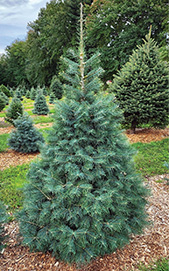
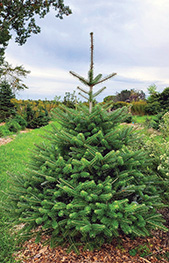
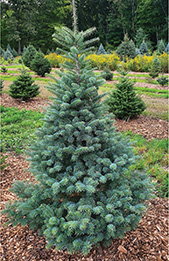
Korean x corkbark
both can have exceptional blue foliage.
Too Much Rain
The most significant challenge has been extreme rainfall. The triple tropical storms in July and August 2021, led to flooded soils and great risk to conifers’ roots from anoxia (drowning) and various root diseases, including phytophthora root rot (PRR). Largely because of the risk from PRR, Christmas tree researchers from around the country have been collaborating since 2011 to find new plant material, mostly focusing on firs native to Turkey, that can survive and thrive under our new and challenging climate conditions.
Some of these plants have demonstrated tolerance to wetter soil, drought, and heat that damages our favored Christmas tree species (Fraser or balsam firs). It is likely that as seeds from the extraordinary selections of Turkish, Trojan, and Nordmann fir become available, they will become dominant species for our growers in Connecticut.
Species to Consider Growing
Species that may soon be out of favor to grow because they are too sensitive to newly stressful growing conditions (especially wet soils and root rots) include many of our favorite species: Douglas-fir and Fraser, balsam, and concolor fir. Being able to continue growing these species may require ideal sites with excellent soil drainage, or possibly physical modifications like raised beds or subsurface tiling. In the landscape, building a mound of soil to elevate a planting site for these species is advised.
Research from North Carolina State University has demonstrated that there is only one species of fir, Abies firma, aka momi fir, that is highly resistant to Phytophthora cinnamomi, the dominant PRR species there. Momi fir is an unpleasant tree to consider for growing as a Christmas tree or for the landscape. It has spiny, sharp, stiff needles, poor color, and is sensitive to heat injury and damage from late frosts, due to early bud break.
However, for those interested in growing firs that are susceptible to root rot, momi fir can be used as a rootstock onto which a more marketable species can be grafted. Growers in North Carolina are starting to graft Fraser onto momi fir rootstock.
With respect to growing trees in the landscape, Fraser is especially problematic, as it is not only the species most susceptible to root rot, it also commonly harbors spruce spider mites, armored scales (elongate hemlock scale and cryptomeria scale), and when stressed produces an abundance of cones.
Cones on firs retain the central stem and shed the surrounding scales and seeds. These brown, hard stalks remain permanently on trees and can be disfiguring, requiring cone removal by hand in early summer to preserve good aesthetics.
Balsam fir and its southern variant Canaan fir are less susceptible to PRR and are not likely to set cones but are also affected by spruce spider mites and armored scales.
Of the firs native to North America, the concolor fir is best suited for landscape planting in Connecticut. Some of the interior sourced concolor firs (seeds originating from the Rocky Mountains in New Mexico or Arizona, rather than from the Coastal Range) can make beautiful landscape or Christmas trees.
These trees have a strong tap root and are intolerant of flooded soils, so choose a site carefully when planting. They are less susceptible to armored scales and mites but can be susceptible to several foliar diseases – most of which are not important enough to require fungicide sprays. Do grow these trees in open locations to maximize air movement and to prevent foliar disease.
Several species of exotic firs or hybrids can be expected to become more important as Christmas trees or as landscape specimens. Among these are Korean fir, Korean x corkbark fir hybrids, Turkish fir (Abies bornmuelleriana), Nordmann fir (Abies nordmanniana), and Trojan fir (Abies nordmanniana subsp. equi-trojani).
The Korean fir (Abies koreana) has relatively short, rounded, dark green needles and is easily identified by its fragrance and the undersides of the needles being almost entirely silvery white. This species is tolerant of wet soils (if phytophthora is not present), and spruce spider mites, has very dense foliage that holds well after harvest as a Christmas tree or for making wreaths. In the landscape, they are marketed for having ornamental purplish cones, which of course would be a drawback to their culture as Christmas trees.
Corkbark fir (aka subalpine fir, Abies lasiocarpa) has a very narrow taper and has been grown elsewhere as a Christmas tree. Its hybrid with Korean fir has a natural taper matching the customer ideal, has the fragrance of its Korean parent, and a silvery blue foliage color. It appears to have more tolerance to root rot than Korean fir.
Turkish, Trojan and Nordmann fir are considered by some plant taxonomists to be variants of one species – rather like our situation in North America with Fraser, balsam, and Canaan firs. However, they have been in isolated mountain populations long enough to develop distinctive characteristics and so they can be described separately.
For practical purposes, they survive conditions of wet soils and phytophthora presence that would kill all Fraser firs. Because they are also less susceptible to armored scales and spruce spider mites, I consider these species to be a great alternative to native species to consider for growing as Christmas trees or in the landscape. These species have glossy dark green foliage and hold needles well after harvest. The needles are longer than balsam fir and shorter than concolor fir.
Turkish and Trojan fir have more pointed needles than Nordmann fir, and Nordmann fir needles are not held out above the branch like a bottle brush as much as the other two species. Two drawbacks for these species are that they have very little aroma, and possibly because of this, they are tasty to all kinds of browsers (rabbits and deer). Therefore, repellents may be needed to prevent damage.
A new product based on sheep fat called Trico (made by Kwizda Agro GmbH, an Austrian company) has been found by Cornell scientists to deter deer browsing all winter and could be useful not only for Christmas trees but all other ornamentals.
These trees have extremely large tap roots. Unlike other tree species that are usually planted as 3-5 year-old bare-root transplants, these establish very well as 2-year old plugs. The dominant, deep tap root may not make these species amenable to transplanting for growing in the landscape. However, I have had good success in transplanting trees up to 4 feet tall.
Spruce & Pine
Because true firs are such a problem with respect to root rot diseases, I anticipate that growers will increasingly be planting various species of spruce or pine, which are less susceptible. One trade-off is that in place of root diseases, spruces are susceptible to white pine weevil attack of their leader in the spring, and to one or more needle cast diseases.
Colorado blue spruce (CBS), which has great characteristics as a Christmas tree (it holds needles well and has stiff branches), is very susceptible to rhizo-sphaera needle cast. A second foliar disease, rhizoctonia web blight, has become important in the Midwest and so growers in many locations have stopped growing this species.
CBS can vary in color from almost white, to blue and green shades. They appear to be quite tolerant of drought and wetter conditions. The spininess of the needles will turn off some customers, while others like the cactus-like sharp needles because they keep cats and small children out of their Christmas tree. How sharp and stiff the needles are can vary with the individual tree; some CBS are not objectionably prickly.
Other spruces to consider are Serbian and Meyer (Chinese blue) spruces. Most spruce needles are nearly square in cross section, but Serbian spruce are the exception and have flat needles. Serbian spruce has a two-toned color, with dark on the upper surface and light colored beneath. This species is highly valued as a landscape specimen tree.
Meyer spruce make a good replacement for CBS and are renowned for being able to withstand drought. Meyer spruce does have early bud break, and so could be susceptible to late spring frosts.
Pines have generally been less popular as Christmas trees but are worth reconsidering. White pine is the only species truly native throughout Connecticut, are fast-growing, have good needle retention and aroma, but have somewhat willowy branches that may not hold heavy ornaments well.
Growers recognize that white pine tolerates wetter conditions than any other species grown as Christmas trees. Although pines are susceptible to various insects and diseases, we may find that these are more manageable than the root rots affecting true firs.
Other species of pines available to grow as Christmas trees include Austrian pine, which has long needles, and Scots pine, which is a mainstay for Midwestern growers. Of these species, only white pine should be considered for potential value in landscape planting.
I am hoping that readers of this article will recognize the challenges facing Christmas tree growers in their efforts to grow attractive trees. To have aesthetically pleasing trees requires considerable effort to fertilize and shear trees.
Increasingly stressful conditions unfortunately need to be met with increasing inputs of fungicides, insecticides, miticides, or expenses in tiling fields or building raised beds to prevent losses from our rapidly changing climate.
Some trees that we love, such as Fraser fir, soon may not be suitable for growing in Connecticut, and so both growers and customers need to adapt and find attractive alternatives to brighten our holiday seasons. For those looking to enhance their landscape with a Christmas tree-shaped conifer, I hope that this article has provided information useful to choose a species that will require less efforts to keep healthy.

Richard Cowles has worked at the Valley Laboratory of the Connecticut Agricultural Experiment Station since 1994. He focuses on finding practical solutions for managing important insect and mite pests. Some of his current research efforts are directed toward improving the genetics of fir trees grown as Christmas trees.
